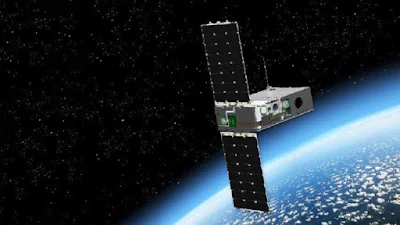Even in the vast expanses of the smallest details can make a big difference. An experiment at the Massachusetts Institute of Technology, which is about to begin, will show why. Kubsat with the Deformable Mirror Demonstration Mission (DeMi) will test the new telescope mirror by the end of this year. It will help provide future satellites with the tools to search for exoplanets that may be inhabited by life.
This mirror is exceptional. But this is not visible when viewed from afar. Behind its reflective surface are 140 tiny actuators (drives) that allow the mirror to bend and adapt to more accurately read the light from the stars outside of our solar system.Why telescopes bendable mirrors?
Why do you need it? The fact is that in orbit everything is quite difficult. One side of the satellite may be hot in the sun; the other is very cold. As the temperature changes, parts change in size and move. Rotating and pushing can cause vibrations. “All these interferences lead to tiny specks in the pictures you take,” said Kerry Khaoy, an associate professor at the department of aeronautics and astronautics at the Massachusetts Institute of Technology.
To fix this, the mirror can “feel” the errors in the picture and bend, correcting them. This is done by analyzing the light that enters the mirror. Printed circuit boards send signals to the rods, which adjust the shape of the mirror accordingly. No need to move a lot: we are talking about 10-20 nanometers. But even such small changes can deal with any distortion of light that enters the telescope. “The good thing about this type of technology is how good the contract is,” says Paula do Weil Pereira, a graduate student at the Massachusetts Institute of Technology, the head of the mechanical part of the project.
Scientists could use an enlarged version of this deformable mirror to get better-quality images of stars, block the light from the star, and shoot nearby exoplanets. The mirror will also help them to better capture a clear light, so that one could discern the spectrum of gases of individual planets. From gases it would be possible to understand the composition of the atmosphere, and also to understand what we observe outside of our solar system.
Although this is only a test of the work of a mirror in space, future missions that use larger versions of such a mirror will look for gases — such as carbon — and traces of water that hint at life.
For space, this technique may be new, but on Earth it has been used for many years to combat the distortion caused by our own atmosphere. Ground-based observatories have mirrors that adapt many times per second, in response to indications of how winds and atmospheric gases affect light.
Ultimately, the data from this small experiment will form the basis for future telescopes. Scientists would like the next telescope to “be able to find out if there is life on another planet by looking at the spectra of a planet or another star,” Kahoy says.
Tags
Space
